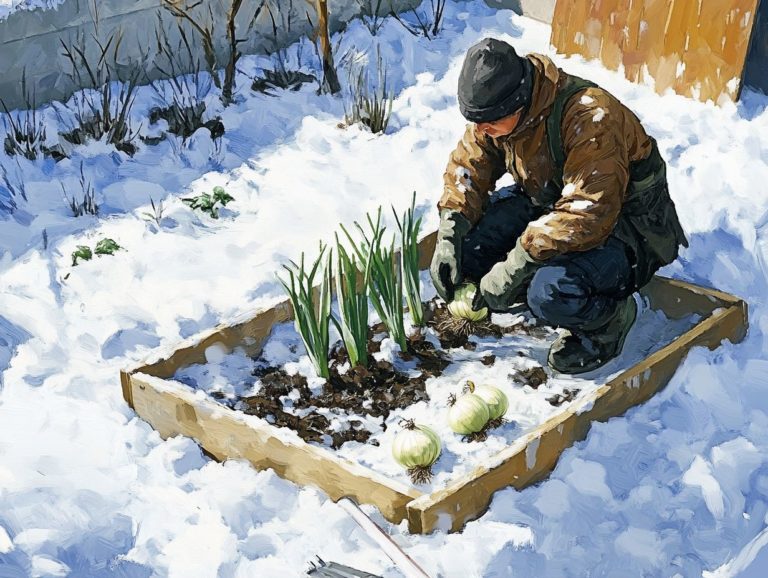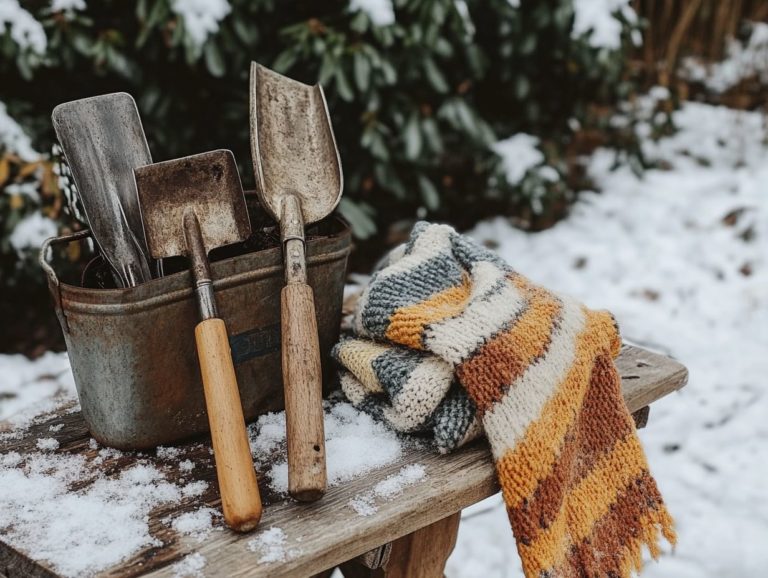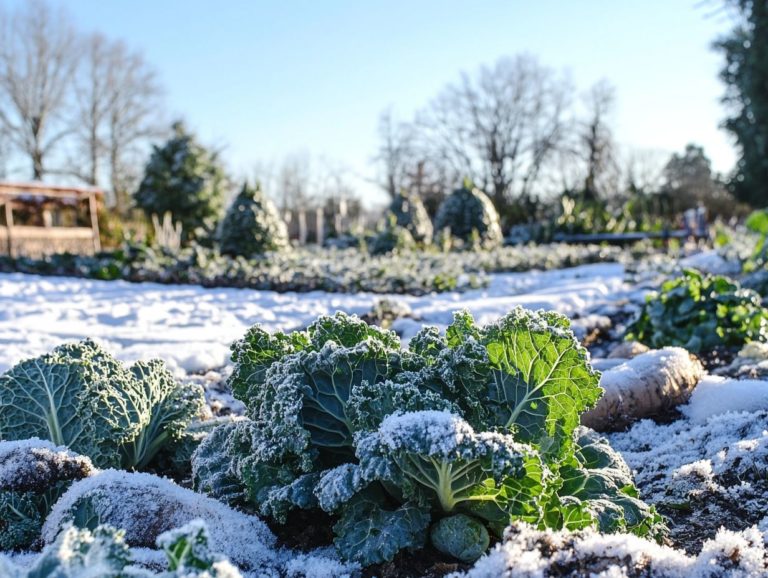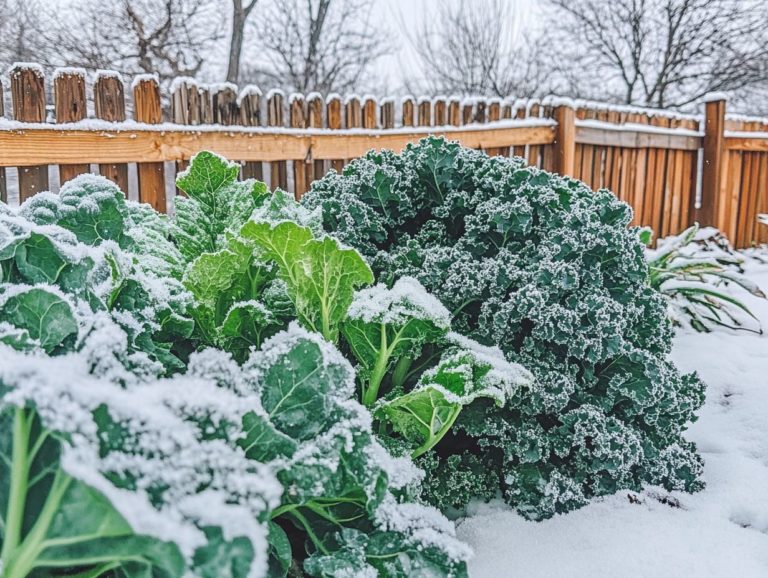Understanding Pollination in Winter Crops
Pollination is pivotal to the success of winter crops, significantly influencing both yield and quality.
If pollination doesn t happen well, crops like tomatoes and cucumbers might not produce as much or as good fruit. You ll discover a variety of methods both natural and artificial and how environmental factors such as weather and the availability of pollinators can affect the process. For farmers and gardeners, maximizing pollination is essential. You ll find best practices that can help you achieve this goal.
Let s dive into common challenges and discover exciting solutions for sustainable pollination in winter crops. Dive in with us to uncover the vital connections between effective pollination and flourishing winter agriculture.
Contents
- Key Takeaways:
- The Importance of Pollination in Winter Crops
- Pollination Methods for Winter Crops
- Factors Affecting Pollination in Winter Crops
- Maximizing Pollination in Winter Crops
- Common Pollination Problems in Winter Crops
- Future of Pollination in Winter Crops
- Frequently Asked Questions
- What is pollination and why is it important for winter crops?
- How does pollination occur in winter crops?
- What are some common pollinators for winter crops?
- How does the winter season affect pollination in crops?
- What can farmers do to ensure proper pollination in winter crops and support native pollinators?
- Are there benefits of winter pollination besides crop production, and how does it support pollinator success?
Key Takeaways:
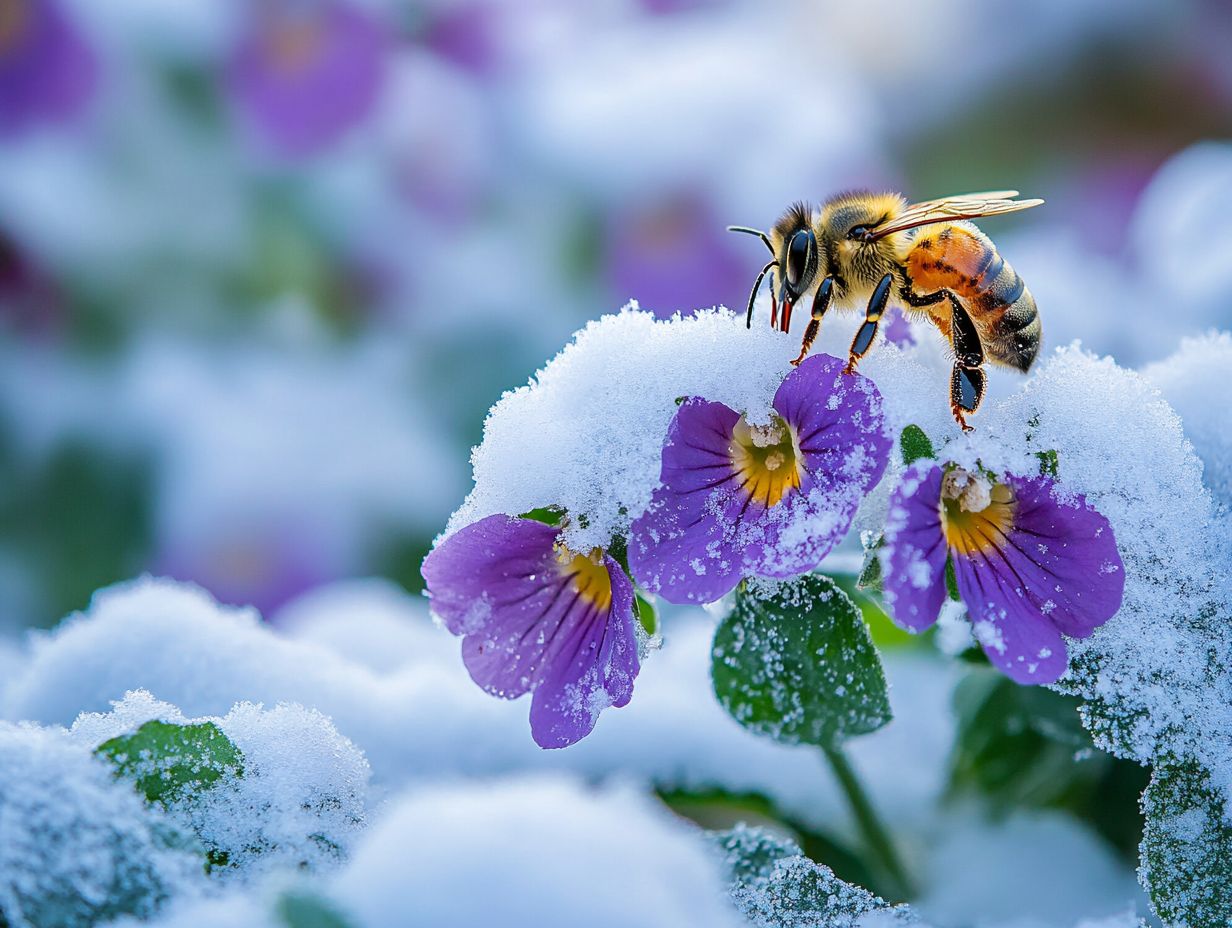
The Importance of Pollination in Winter Crops
Pollination is a vital process for the health of winter crops, significantly influencing both the yield and quality of your produce. Without effective pollination, crops such as tomatoes and cucumbers may struggle to deliver the quantity and quality of fruits you desire.
Native bees, including honey bees and bumble bees, are instrumental in this process, particularly during the early spring when seasonal blooms first appear. By understanding how to support these essential pollinators, you can greatly enhance the success of your winter crop production.
Why Pollination Matters for Winter Crops
Pollination is essential for winter crops, significantly influencing the yield, quality, and sustainability of your vegetable harvests.
The intricate relationship between pollinators and plants determines not only the quantity of your produce but also its taste and nutritional value. By having native plants in your vicinity, you create vital habitats for beneficial insects the unsung heroes of the pollination process.
These insects, including bees and butterflies, play a crucial role in effective pollination, directly benefiting crops like squash, broccoli, and carrots.
Enhanced pollination is key to food security, ensuring that these crops can flourish even in challenging winter conditions, thereby supporting local economies and communities. Cultivating a robust ecosystem that nurtures both native flora and insect populations is essential for boosting agricultural productivity and resilience.
Pollination Methods for Winter Crops
Your choice of pollination methods can greatly affect your winter crops. You can choose between natural and artificial techniques.
Natural pollination mainly involves native pollinators like honey bees and bumble bees. It enriches the genetic diversity of your crops, meaning they can adapt better to changes and resist diseases. On the other hand, artificial methods can serve as a valuable alternative, especially when pollinator populations are dwindling or when you aim for specific traits in your crops.
Natural vs. Artificial Pollination
Natural pollination depends on a variety of pollinator species, such as native bees and butterflies, while artificial pollination requires your intervention to ensure crops are properly fertilized.
These two approaches starkly contrast in their processes and outcomes, showcasing how ecosystems flourish when left undisturbed versus when they need a helping hand from humans. The significance of a diverse array of pollinators cannot be overstated; each species plays a unique role in the success of flowering plants. For instance, honey bees are celebrated for their efficiency, yet native species like mason bees often outperform them in cooler climates.
Natural pollination fosters biodiversity and bolsters ecological health, whereas artificial methods can secure crop yields when pollinator populations are dwindling or environmental conditions are less than ideal. Grasping the benefits and potential downsides of these methods is crucial for fostering sustainable agricultural practices and maintaining ecosystem vitality.
Factors Affecting Pollination in Winter Crops
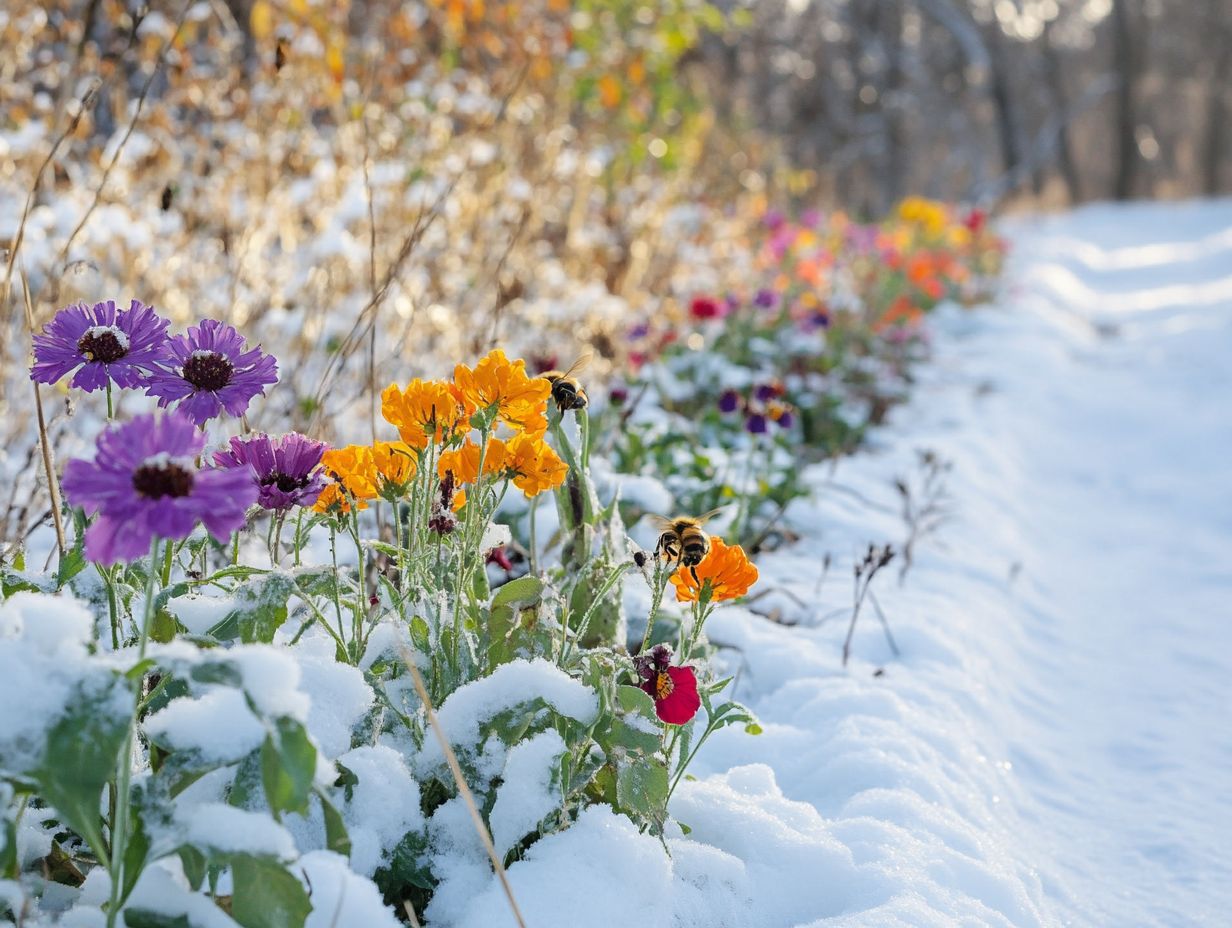
Several critical factors influence the effectiveness of pollination in winter crops. These include weather and environmental conditions as well as the availability and health of pollinators.
Cold winter temperatures can impede the activity of pollinating insects. This ultimately results in decreased pollination success during the crucial early spring period.
Weather and Environmental Conditions
Weather conditions significantly impact the pollination success of winter crops. Extreme winter temperatures can adversely affect pollinator activity and crop health.
These conditions lead to fewer active pollinators, resulting in lower yields and compromised produce quality. Unpredictable precipitation patterns can also disrupt the flowering timelines of crops, making it harder for pollinators to find food when they need it most.
Try these strategies to enhance pollination:
- Diversify planting schedules
- Use protective covers
- Foster habitats that attract various species of pollinators
By promoting a more resilient ecosystem, you can help ensure that pollinators thrive despite changing climates.
Availability of Pollinators
The presence of pollinators, including native bees and honey bees, is vital for successful pollination in winter crops. Their availability directly impacts your crop yield.
Factors affecting their populations include habitat loss, pesticide exposure, and climate change. Embracing conservation efforts will create pollinator-friendly environments with essential resources year-round.
Planting a variety of flowering plants that bloom at different times ensures a steady food supply for these crucial allies. Providing shelter and nesting sites greatly benefits native bee populations, especially during harsh winter months.
Leave certain areas of your garden a bit untamed or incorporate native plant species. This fosters a thriving ecosystem, enhancing crop pollination and bolstering overall biodiversity.
Maximizing Pollination in Winter Crops
To maximize pollination in your winter crops, implement best practices that foster healthy pollinator habitats and ensure a steady supply of seasonal blooms. Prioritizing these strategies creates an environment where pollinators thrive, enhancing the productivity and health of your crops.
Best Practices for Farmers and Gardeners
Farmers and gardeners can adopt best practices that enhance pollinator conservation and support beneficial insects.
Reducing pesticide use safeguards these vital creatures and cultivates a healthier landscape. Incorporating a variety of flowering plants can enhance food sources throughout the growing season, allowing pollinators to flourish.
Establish overwintering habitats by leaving patches of soil undisturbed or providing shelter with native plant cover. These actions help insects weather harsh conditions.
Collectively, these strategies contribute to a resilient ecosystem, boosting crop yields and improving soil health over time while promoting biodiversity that supports the intricate web of life on your farm or in your garden.
Common Pollination Problems in Winter Crops
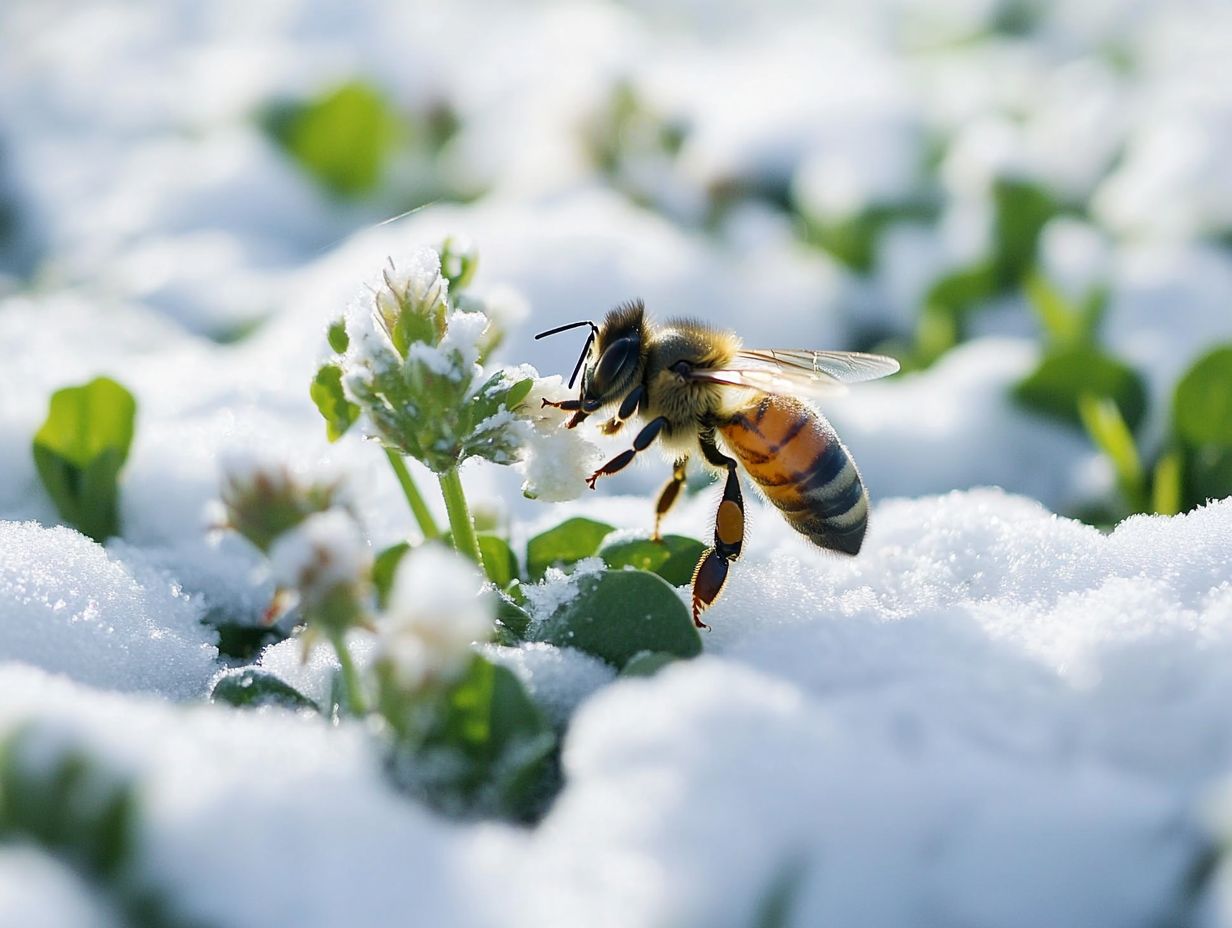
Common pollination challenges in winter crops can significantly impact your crop yield. These issues often arise from insufficient pollinator activity or various environmental stressors that hinder optimal growth.
Identifying and Addressing Issues
Identifying and addressing pollination issues in winter crops require you to assess a range of factors. These factors include environmental conditions and the health of honey bee populations.
You can gain valuable insights into specific pollination challenges by closely observing flower blooming patterns and noting any discrepancies in fruit set. Monitoring local weather conditions like temperature and rainfall is also crucial, as extreme weather can significantly hinder pollinator activity.
To create a more inviting environment for these essential insects, consider implementing practices such as establishing habitats that attract pollinators and minimizing pesticide use. Fostering a diversity of flowering plants in and around your crop fields supports healthy pollinator populations and promotes efficient pollination, ultimately enhancing your crop yields.
Future of Pollination in Winter Crops
The future of pollination in winter crops depends on your commitment to sustainable practices and innovative strategies crafted to support and enhance pollinator conservation efforts.
Embracing these approaches will not only ensure the vitality of your crops but also contribute to the broader ecosystem’s health. Let s make our crops thrive!
Challenges and Solutions for Sustainable Pollination
The challenges you face regarding sustainable pollination in winter crops are quite complex. They stem from the loss of pollinator habitat and changing environmental conditions that adversely affect pollinator health.
These issues are further aggravated by the rising use of agricultural chemicals, climate variability, and habitat fragmentation, which create an increasingly inhospitable environment for essential pollinators. If you aim to maintain and enhance crop yields, implementing tailored solutions is crucial.
By creating adequate pollinator habitats think wildflower strips and hedgerows you can provide vital resources for bees and other insects. When combined with adaptive farming practices that prioritize ecological health, these strategies protect pollinator populations and contribute to the long-term sustainability of agriculture.
Frequently Asked Questions
What is pollination and why is it important for winter crops?

Pollination is the process by which pollen from the male reproductive organs of a plant is transferred to the female reproductive organs, leading to fertilization and the development of seeds. It is essential for the reproduction and growth of winter crops, as it allows for genetic diversity and the production of new plants.
How does pollination occur in winter crops?
In winter crops, pollination can occur through various methods, including wind, insects, and even self-pollination. Wind-pollinated crops, such as wheat and oats, rely on the wind to carry pollen from one plant to another. Insect-pollinated crops, such as canola and sunflowers, require the assistance of bees and other pollinators to transfer pollen. For those interested in how to enhance this process, exploring techniques that help with pollination in cold weather can be beneficial. Some winter crops, like corn, can pollinate themselves through the release of pollen within the same plant.
What are some common pollinators for winter crops?
Bees, including honeybees and bumblebees, are the most commonly known pollinators for winter crops. Other important pollinators include butterflies, moths, beetles, and flies. These insects are attracted to the flowers of winter crops and help transfer pollen from one plant to another.
How does the winter season affect pollination in crops?
The winter season can have a significant impact on pollination in crops. Cold temperatures and harsh weather conditions can reduce the activity of pollinators, leading to decreased pollination. In some cases, winter crops may also experience delayed or reduced flowering, which can affect pollination and ultimately, crop yield.
What can farmers do to ensure proper pollination in winter crops and support native pollinators?
Farmers can encourage pollination by planting a variety of species. This includes flowering trees, blooming shrubs, and edible fruit plants, which provide essential shelter and food for pollinators.
They should also manage pesticides responsibly. Monitoring weather conditions and using pesticides that are safe for bees can significantly help pollinator populations.
Are there benefits of winter pollination besides crop production, and how does it support pollinator success?
Yes! Pollination in winter crops has important ecological benefits. It helps keep biodiversity strong and encourages the growth of wild plants like milkweed and seasonal blooms from Crocus and Snowdrops. For more insights, check out understanding winter pollinators.
Pollinators also play a vital role in producing essential crops like fruits and vegetables. This makes them crucial for a sustainable food system.

